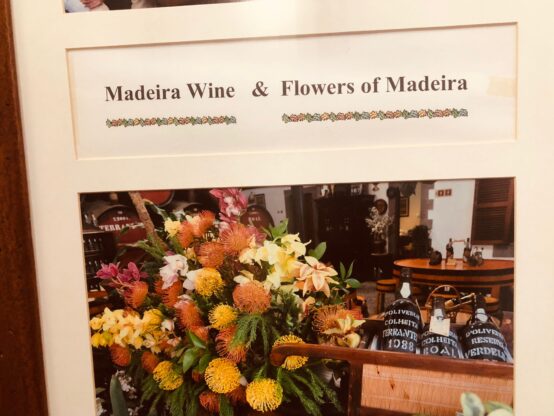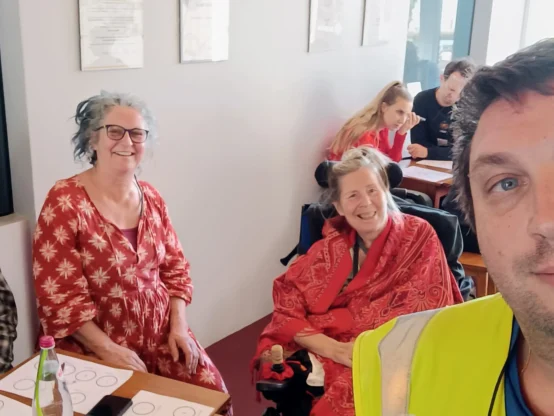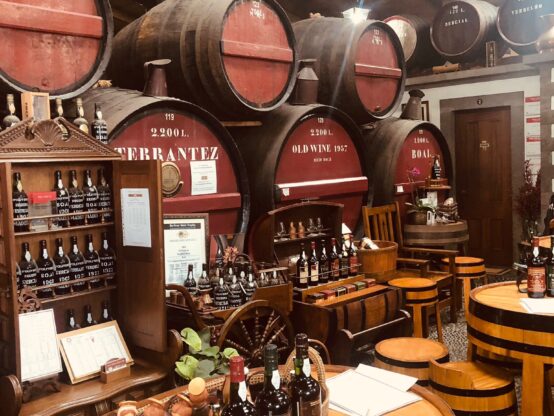Wine Tasting
Private Tour € / Cruise Tour €
VAT included at the legal rate in force.
The Wine Tour is one of our tours just for the lovers and appreciators of these drinks.
It is possible to taste this traditional nectar in several places and specialty shops.
Some shops are only possible by reservation and the tasting is paid.
In some shops, if you buy an item, a discount is given for the paid tasting.
It is possible to make stops at other places.
The Places:
- Henriques E Henriques Winery
- São Francisco Winery ( Blandy )
- Wineries Pereira D Oliveira
- Barbeito Wine Cellars
Madeira Wine, A Secular History
Madeira Island was discovered during the golden age of Portuguese discoveries by João Gonçalves Zarco, Tristão Vaz Teixeira and Bartolomeu Perestrello in 1419.
The three captains-dignatory received the domain of the captaincies under the direction of Monarch D. Henriques, and soon they cleared the land and occupied the soil of this Island by growing wheat, vines and sugar cane.
The first colonisers were members of the Portuguese nobility and brought workers and artisans to the island from the north of Portugal. The special privileges granted to those who colonised the island in these early years of exploitation also attracted big businessmen from Europe who soon realised Madeira’s potential for linking up with important export markets.
The density of the Island’s vegetation meant that large areas of land had to be burned, which further contributed to its fertility.
In the early years of colonisation, until 1461, the first levada system was built which was gradually added to over the centuries.
Agriculture prospered with great emphasis on sugar cultivation, but also vines and wheat.
By 1466, sugar had become the main crop and, in addition to the exports that until then were directed to continental Portugal, the Gulf of Kenya and African markets, its expansion to the Mediterranean and Northern European markets took place.
Although it is not known precisely when and where the first vines were planted, it is thought that the first colonizers brought with them varieties that already existed in Minho.
However, historical records from the Venetian navigator Alvise da Mosto, known as Luís de Cada mosto, dating back to 1450, show the introduction of the Malvasia Candida grape variety in the first years of colonization.
The navigator mentions that “…among the various grape varieties, Prince Henry had land planted with Malvasia that was sent from Candia (capital of Crete) and which is developing very well…”, and also praises, in his travel journal, the exportation of wine and its good quality.
These records are remarkable as they prove that, admirably, 25 years after the start of the colonisation of the Island, Madeira wine exports were already a reality!
Madeira Wine, Embroidery and Handicraft Institute, I. P. 2
Throughout the 15th century, the vine growing area increased, resulting in an increase in exports. However, the discovery of America by Christopher Columbus was undoubtedly the event that would decisively mark the history of Madeira Wine.
Episodes involving historical figures are told of this period where Madeira wine has become famous abroad.
It is said that in 1478 Georges, Duke of Clarence, brother of Edward IV, King of England, on being sentenced to capital punishment by the Upper House, chose to drown in a cask of Malvasia Wine.
XVI Century
The 16th century began on the island with a decline in sugar cane cultivation, which was due to a number of factors, including an excess production and the exhaustion of the soil.
At the end of the century, the crisis set in, with competition from sugar from Brazil, which offered much cheaper prices. The sugar-growing land was now converted into vineyards.
Foreign settlers continued to arrive in Madeira, including Simão Acciaioly, who introduced the Malvasia Babosa grape to the island.
Throughout this century there are several testimonials from visitors such as the Venetian Giulio Landi and the Italian Pompeo Arditique with references to Malvazia. Giulio mentions that “The whole Island produces a lot of wines that are considered excellent and very similar to Malvasia de Candia”.
XVII Century
Throughout the 17th century the production and export of Madeira Wine underwent a great increase, and it is believed that during that period exports tripled.
As most of the exporters were foreigners, British influence in the sector will only be predominantly felt with the development of the colonial markets in America and through trade concessions made to British merchants.
These concessions gave English traders residing on the island a privileged position in trade with the Indies and the Americas, with these markets supplanting Brazil in importance, which until then had been the largest export market for Madeira Wine.
This was how the triangular trade between Madeira, the New World and Europe (with Great Britain in particular) was opened, a triangle which also included the transport of goods from the Portuguese and British colonies back to Europe.
Instituto do Vinho, do Bordado e do Artesanato da Madeira, I. P. 3
18th Century
At the beginning of the 18th Century the Methuen Treaty (1703) was signed between England and Portugal whereby Portuguese wines paid one third less in customs duties when entering England than wines from other countries and according to which English textiles entered Portugal without any customs duties being charged.
Despite this measure, which greatly benefited Port Wine as intended, Madeira wine exports continued to go mainly to India and North America.
Exports to Europe were secondary.
Madeira wine is very closely associated with North America, as evidenced by the fact that the celebration of the Declaration of Independence of the United States of America, on July 4, 1776, by its first president, George Washington, was toasted with a glass of Madeira wine.
Present at the most refined tables of the European courts, it was the preferred wine of kings, emperors and statesmen. Thomas Jefferson, like all the Founding Fathers, was a connoisseur of the finest wines of the time, but his wine of choice was Madeira Wine.
The demand for Madeira Wine was so exuberant at this time that it also had negative consequences: on the one hand, good quality wines began to be mixed with lower quality wines, generally produced on the north coast of the Island and, on the other, fake Madeira Wines produced elsewhere began to enter the market.
Throughout the century, efforts are made to create and implement strict regulations in order to maintain the quality of the wines.
Besides being the period of great notoriety and fame of Madeira wine, this period, which runs through the 18th century, is particularly interesting and fruitful with regard to the development of the character of the wine.
The introduction of two new techniques contributes to this development, namely, fortification and estufagem.
By the mid 18th Century, most wineries were already fortifying their wines.
Perhaps fortification was initially a kind of business secret.
One of Cook’s anonymous chroniclers of his first round-the-world voyage states that “it is generally asserted that no distilled beverages are added to these wines, but I have been assured, with certainty, of the contrary, and have seen spirits used for that purpose”.
Instituto do Vinho, do Bordado e do Artesanato da Madeira, I. P. 4
Curiously, the distribution of exports by market at the end of the century underwent a turnaround, probably due to the war of Independence in the United States of America, which brought many British citizens back to Great Britain, with the English market gradually gaining a greater dimension in Madeira Wine imports.
19th Century
The beginning of the 19th century began with a boom in exports which were inflated by the Napoleonic wars.
But in the end, this was not to be a favourable century for Madeira Wine.
The post-war depression in the first decade of the century proved to be harmful to Madeira wine which saw a substantial decrease in its exports.
The reopening of the ports of France and Spain which until then had remained closed contributed to this, allowing Portuguese wines to enter the British market without competition.
Of the many events related to this post-war period, one continues to arouse great interest, having been recommended by Henry Veitch, the English consul in Madeira who, on the occasion of Napoleon Bonaparte’s passage through the Island in 1815, on his way into exile to the Island of Saint Helena, offered the emperor a cask of Malvasia.
The story goes that, faced with the emperor’s resistance to making Madeira wine the antidote to the hardships of exile, the cask containing the precious nectar returned to the Island of Madeira, reclaimed by its donor and multiplied in 1840 into hundreds of bottles that were the delight of countless Englishmen, including Sir Winston Churchill who, visiting Madeira in 1950, had the privilege of tasting it.
The instability in North America resulting from the 1861 civil war would dramatically affect ex shipments of Madeira Wine to that destination.
And although Madeira wine was fashionable in post-war England, the truth is that this was not enough to make up for the contraction of the American market.
Other factors also played a part in the changes seen in exports, namely the opening of the Suez Canal in 1869, when ships heading west no longer passed through the Island of Madeira.
The expansion of the Russian market appears to be a breath of fresh air in the middle of the century and for a while this market rivalled the British market in terms of business volume.
However, the second half of the century was marked by the devastating effect of the diseases that attacked the vineyards: powdery mildew and phylloxera.
Madeira Wine, Embroidery and Handicraft Institute 5
During this period and despite the increase in American vines which emerged as a way of dealing with phylloxera, the majority of Madeira Wine production was based on Verdelho and Tinta Negra, with Bual, Bastardo and Terrantez also being reported frequently.
Wine produced from the Malvasia grape variety continued to be made in small quantities, with the quality coming from the mythical Malvasia Candida from Fajã do Padres, initially owned by Jesuits, remaining very famous.
Despite various crises at the turn of the century, Madeira wine production and commercialisation recovered and remained on the market, projecting itself into the future.
20th and 21st Centuries
The 20th century will be for Madeira Wine relatively stable when compared to the previous century.
In the first decade of this century and up until the Great War, the export markets change and the German market comes to have a singular projection as the top export market.
But in the time between the two world wars, the main destinations for exporting Madeira Wine undergo some oscillations, with the Scandinavian market, mainly Sweden and Denmark, emerging as consumers of the best Madeira Wine.
This century is also marked by an effort to regulate the quality of Madeira Wine and also by a large number of mergers between Portuguese and English producers which completely change the scenario of the business fabric of Madeira Wine producers.
As of the 1980s, trends began to be set in the export markets which shall not undergo significant alterations until the present day.
The 1974 Revolution and later Portugal’s entry into the European Union brought development to the Region which had an impact on the winemaking sector.
On the one hand, the reinforcement of quality control became a priority in government policies and, on the other, there was a significant and healthy development in the wine industry.
The 21st century began with a reinforcement of the quality of a Wine with more than 500 years of history.
Today, the wine-growers and all the companies connected to the production and trade of Madeira Wine are strongly committed to constantly improving the quality of this Wine, seeking to contribute, from planting the vines to bottling the Wine, to preserving the fame and prestige of one of the best wines in the world.
Instituto do Vinho, do Bordado e do Artesanato da Madeira, I. P. 6
WINE FROM THE ROAD
As of the 17th century, Madeira Wine had one of its main markets in the Indies.
This trade route became famous for Madeira Wine not only due to the quantity of exports that took place over two centuries but also for the famous “Vinho da Roda”.
The transport of Madeira Wine to those parts was carried out in the holds of ships which reached very high temperatures whilst passing through the tropics. It sometimes happened that the wine would return to Europe and it was found that these journeys greatly benefited the quality of the wine.
It was then that barrels of Madeira wine were sent to the Indies with the sole purpose of enriching and adding value to it and then returned to Europe where it gained unprecedented fame.
In England the Vinho da Roda gained an extraordinary reputation which led to it being sold at astronomical prices.
Motivated by evidence that heat increased the value of Madeira Wine and probably attracted by the appreciation of the Vinho da Roda, producers in the mid 18th century invested in estufagem, a technique that is still used to the present day.
Taken from :
Instituto do Vinho, do Bordado e do Artesanato da Madeira, I. P.
Itineraries:
Time:
- Departure at 9:00 / 9:30
- Arrival at 14:00 / 14:30
Itinerary:
Additional options to the tour:
- Off road wheelchair: €60.00
- Wheelchair or Scooter: €60.00
- Guide-interpreter (only available on private tours): €250.00
- Snack with traditional products for adults: €12.00
- Snack with traditional products for children: €12.00
- Snack with traditional products for diabetics: €12.00
- Seats for children aged 5 to 12: free
Recommendations:
- Wear comfortable clothing and footwear
- Bring waterproof if necessary
- Bring sunscreen, a few hours of the day, the sun can burn.
- Bring water/snacks
- We recommend using our equipment as many of the routes are not prepared for manual chairs or electric chairs.
- Our equipment is prepared to climb stairs and do all-terrain.
- We are not responsible if customers’ equipment malfunctions, becomes out of battery, or becomes stuck.
- If it is necessary to remove the chair from the customer, he will be responsible for the costs of the operation.
We stop at various places where they sell drinks, snacks, regional items. Customers are not required to consume, or buy, but if they do, they help the regional economy.
Transportation options:
- 2 people in manual wheelchair and 4 people seated
- 1 person in a manual chair and 5 people seated
- 1 person in electric wheelchair and 4 people seated
- 1 person in wheelchair for all-terrain and 3 people seated
Information:
- It is possible to make this Tour with manual or electric chair and with electric scooter however there are limitations in access to some locations.
- Not all accessible locations allow the entry of electric chairs or scooters.
- There may be delays at the start or end of the Tour due to external situations such as traffic and a lot of influx of people.
- Tours may need to be cancelled or changed due to special conditions such as weather situations or lack of safety conditions.
- In the case of cancellation we offer the option to rebook the Tour or we will refund the money.









































